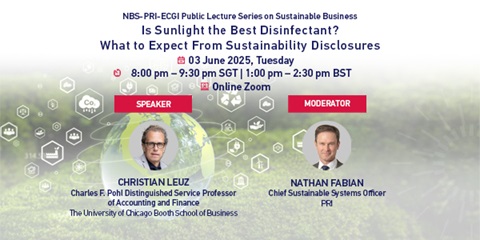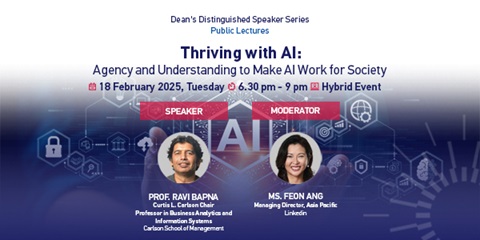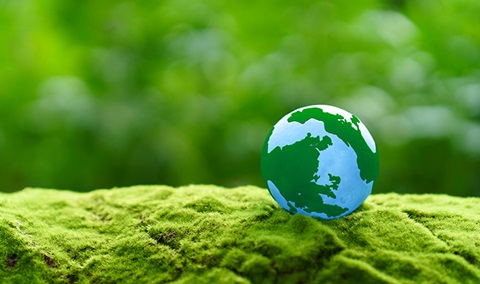What managers can learn from Taylor Swift
In a few weeks from now, Taylor Swift will head to Singapore for the concerts in her Eras tour. If anyone had been worried that COVID-19 would lead to the end of the big concerts, her fans – the Swifties, as they are known – had proven otherwise.
Although my Singaporean students often complain about the rising prices of hawker food, many of them will be at the National Stadium in early March, having spent anywhere up to $1,000 for a coveted ticket. Others may opt to make a nice profit on the resale market, where some tickets are selling for several thousand dollars each. I have a confession to make. I am not a fan of Taylor Swift. I became interested in the American superstar only when my daughter hinted that she wanted to go to her concert in Singapore. When I say "hinting" though, I am being facetious. Like other Swiftie dads, I had to face the persuasive powers of an 11-year-old, a psychological warfare that lasted a few days and ended with me buying tickets to the three-hour documentary on Swift's tour instead. It was not the most popular move, but my bank account is still grateful.
At the cinema, I sat for 45 minutes surrounded by Swifties waving their cellphones around. I could not take it anymore and retreated to the nearest foot massage parlour in the mall.
But as a marketing professor, I am fascinated by the Taylor Swift phenomenon. When people are willing to pay thousands of dollars for an experience, my research ears perk up. What makes people spend their hard-earned money on an experience that lasts only a few hours?
In this case, the Taylor Swift phenomenon can be explained through the concept of emotional energy. It is the excitement you feel when you attend an exhilarating event. It is also the enjoyment you experience when you really connect with someone in a conversation.
However, most managers still have a limited understanding of emotional energy. To motivate their employees, they often rely on financial incentives and rewards. And with their customers, they often focus on customer satisfaction. Regrettably, managers seldom think about the kinds of environments and interactions that fill their employees and customers with emotional energy.
This is a missed opportunity because we are emotional-energy seekers. We are attracted to people and interactions that fill us with emotional energy. And we avoid people and interactions that drain us of energy. If managers better understand the dynamics of emotional energy, they can create more motivating workplaces, more creative employees and more loyal customers. Not every organisation can turn its customers into an army of Swifties. But all organisations can benefit from an injection of emotional energy.
What is emotional energy?
In July 2023, seismologists in Seattle recorded activity equivalent to a magnitude-2.3 earthquake. But this seismic phenomenon was not due to tectonic movements, but to the seismic enthusiasm of Swift fans. The synchronised excitement of Swiftie fans created vibrations like a small earthquake.
Something special happens when you attend an exhilarating football match or a powerful church gathering. There is a video of Liverpool fans on YouTube that has been viewed more than 12 million times. The video shows 95,000 Reds fans at the famous Melbourne Cricket Ground, all singing the team anthem You'll Never Walk Alone. There is something special about people belting out the same song and holding up the red Liverpool scarf together, 17,000km away from Liverpool.
Emotional energy is what makes powerful brands like Liverpool FC or Taylor Swift. For sociologists, emotional energy is first and foremost an emotional state that arises through interaction with others. Father of modern sociology Emile Durkheim talked about the power of religion coming from what he called collective effervescence: the energy that arises from collective gatherings.
So where does this energy come from? There are three ingredients that are key to emotional energy. First, you need co-presence. Nothing can replace the experience of being in the same physical environment, being able to see and hear one another. Take, for example, the phenomenon of Zoom fatigue. Recent research with students has shown that attending video lectures leads to greater signs of fatigue and sadness than attending in-person lectures. Due to the lack of face-to-face contact, it is very difficult to achieve the same quality of interaction online. Second, emotional energy requires a mutual focus where everyone focuses his or her attention on the same object or experience. At Amazon, for instance, strategy meetings involve employees sitting in a room and silently reading the same document for 30 minutes. By reading together in silence, they are not only making sure that everybody absorbs the same information. By focusing together on the same activity, they produce emotional energy. Finally, emotional energy gets amplified by "entrainment". Entrainment is what happens when our speech, movement and emotions synchronise with others. In physics, entrainment is the process of two or more systems synchronising their rhythms over time. For instance, male fireflies sway in synchrony when searching for a mate. This creates a powerful pattern of bioluminescence to attract females. Together, male fireflies, Liverpool fans, or Swifties can create unique energy. Synchronisation amplifies emotional energy.
Emotional energy in business
How can the theory of emotional energy be applied to the world of work? One important area of application is the world of work meetings. Research from Boston University shows that managers spend an average of almost 23 hours a week attending them, up from fewer than 10 hours in the 1960s. However, studies also indicate that employees are becoming increasingly tired of meetings. E-mail fatigue and meeting burnout are leaving people stressed and drained of energy.
But the number of meetings is only part of the problem. Most managers also give little thought to how they conduct meetings and what they want to achieve with them. Managers need to remember that the emotional energy of their employees is an important asset and that running meetings that diminish emotional energy is a terrible outcome. As author Priya Parker points out in The Art Of Gathering, our interactions can crackle and blossom when real thought goes into them. If we start designing work meetings with emotional energy in mind, we are all likely to benefit. Beyond meetings, companies need to think about how to infuse emotional energy into everyday office life. A great example is the French company Xefi, a leading provider of IT services for small and medium-sized enterprises. Remarkably, the company's campus has more fitness rooms than meeting rooms, a 25m swimming pool with eight lanes and 200m-long athletics track that runs through the second floor. More than 60 per cent of employees regularly take part in joint fitness courses and train together for sports competitions.
Importantly, research has shown that having sports events within firms is not only good for employees' health, but also exactly the kind of interactions that boost emotional energy. But a company does not have to install an athletics track to generate emotional energy. Companies can also generate emotional energy through better conversations with customers. In his research, sociologist Randall Collins describes how conversations can generate high emotional energy. When people find common ground in conversations, when they do not interrupt each other and listen carefully to what the other person has to say, conversations can energise us. For this reason, luxury companies are increasingly looking at how they can create successful conversations between employees and customers.
Luxury companies such as Van Cleef & Arpels or Audemars Piguet have developed retail spaces that resemble lounges or cafes rather than traditional retail spaces to facilitate unscripted and stimulating conversations.
Emotional energy at Club Med
In the study I conducted with my colleague Brigitte Auriacombe, we examined the emotional energy in Club Med, a company that sells all-inclusive vacations.
Club Med was founded in the 1950s and has held up well despite fierce competition from other hotel companies. Since the end of the Covid-19 pandemic, the luxury all-inclusive travel brand has seen brisk business and is set to achieve record results in 2023. This is particularly surprising as many business analysts believed 10 years ago that Club Med was doomed to fail: The hotel rooms were too small, and the facilities were not luxurious enough compared with other brands.
Unlike other hotel brands, however, Club Med has always focused on interactions and emotional energy. While other companies in the hospitality industry focus on customer satisfaction, Club Med's success comes from something that cannot be easily captured in a spreadsheet: emotional energy.
Where does the emotional energy of Club Med come from? Every day, it holds lively gatherings where customers and employees dance, sing and celebrate together. At Club Med, emotional energy also happens in small, intimate settings. Service staff are encouraged to talk to customers over lunch, drinks or at parties. We have found that these interactions play a big part in energising the service staff too. When staff and customers find common ground in conversations, and when they take the time to listen to one another, there can be emotional energy. As with Club Med, managers should think more about the power of interactions.
Thinking about emotional energy should also trigger new ways of thinking about productivity. Economists in Singapore say that the best way to improve productivity is through training and education. As a result, Singapore is investing in training programmes under SkillsFuture, which helps workers of all ages upgrade their skills and be nimble for the challenges of a changing job market. I celebrate this type of initiative because education is key in creating a workforce adapted to the knowledge economy.
But managers and economists need to take a broader view of productivity. While education will be key in enhancing productivity, we must all think harder about the ways we can create better gatherings: Design better meetings that energise workers, or create interactions with customers that leave them willing to dig deep into their pockets. Unlike managers, Taylor Swift does not have to think too hard about emotional energy. Her fans already carry tons of it with them. Their energy is stored in the posters they have in their homes and the friendship bracelets they wear.
They are ready to take that emotional energy with them. On March 2, they will flock to the National Stadium, turn on their cellphone flashlights, sing and forget the rest of the world in a sea of emotional energy.
We can all learn a lot from the success of Taylor Swift concerts. If you can get tickets.
Julien Cayla is associate professor of marketing at Nanyang Technological University's Nanyang Business School.
Source : The Straits Times




.tmb-listing.jpg?Culture=en&sfvrsn=8b2cb369_1)


